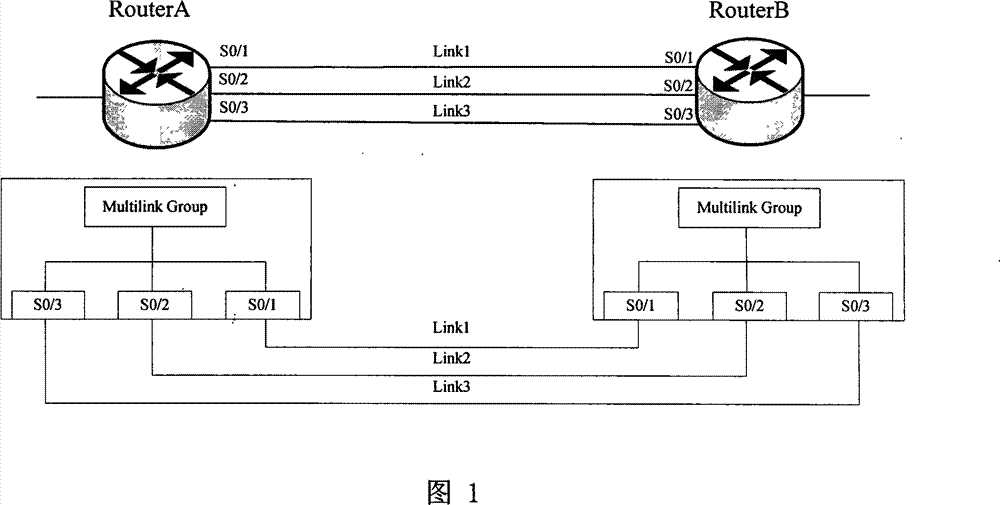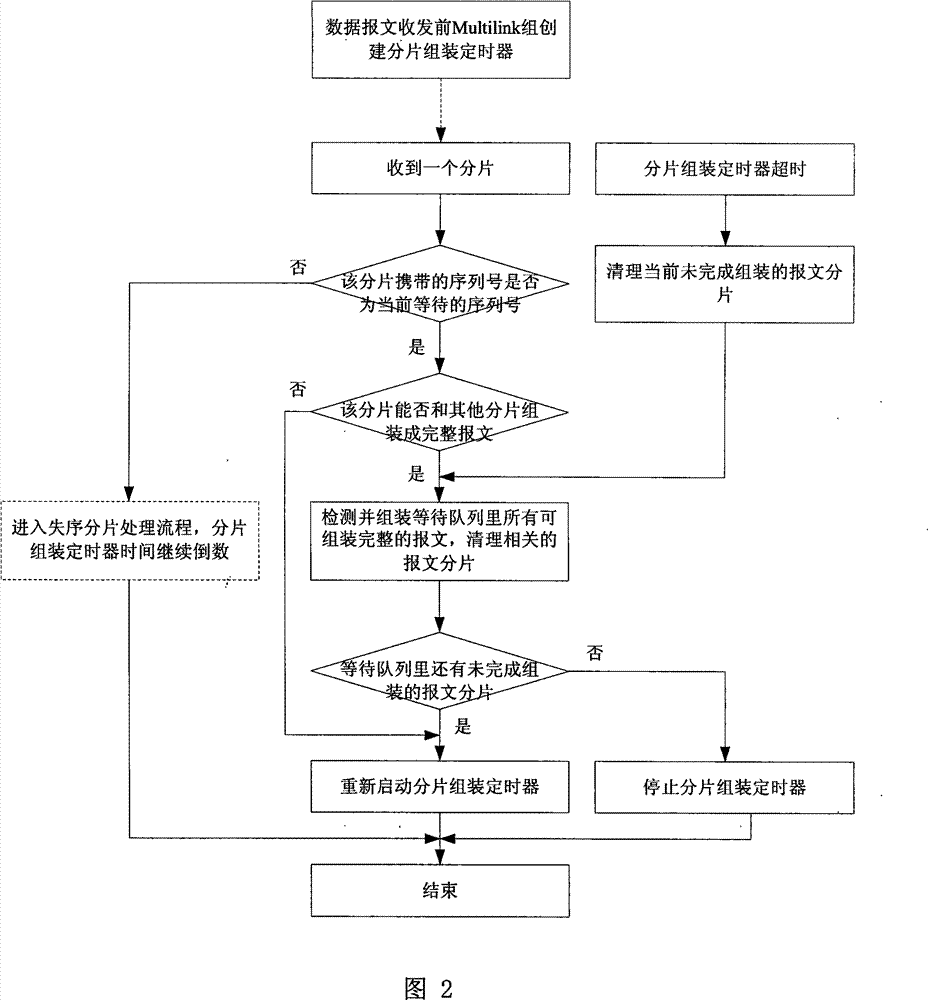Method for lowering buffered packet number in Multilink PPP waiting queue
A waiting queue and caching technology, which is applied to cache the number of fragments in the waiting queue, in the field of Multilink PPP, can solve problems such as inability to deliver in time, unguaranteed conditions, and blocking
- Summary
- Abstract
- Description
- Claims
- Application Information
AI Technical Summary
Problems solved by technology
Method used
Image
Examples
Embodiment Construction
[0026] In order to make the technical means, creative features, goals and effects of the present invention easy to understand,
[0027] In the following, the present invention will be further explained in combination with specific drawings.
[0028] In order to reduce the number of message fragments buffered in the Multilink PPP waiting queue, according to the embodiment described in detail in the above technical solution, it is based on the Multilink PPP application environment (as shown in the example of Figure 1) that bundles multiple sub-links. The end sends fragments according to the standard sequence number increment rule, and uses the fragment loss detection mechanism based on the sequence number increment rule to process the received fragments.
[0029] Referring to Figure 2, the specific steps of the mechanism for clearing cached message fragments over time are as follows:
[0030] 1. Create a fragment assembly timer before the Multilink group starts sending and receiving val...
PUM
 Login to View More
Login to View More Abstract
Description
Claims
Application Information
 Login to View More
Login to View More - R&D
- Intellectual Property
- Life Sciences
- Materials
- Tech Scout
- Unparalleled Data Quality
- Higher Quality Content
- 60% Fewer Hallucinations
Browse by: Latest US Patents, China's latest patents, Technical Efficacy Thesaurus, Application Domain, Technology Topic, Popular Technical Reports.
© 2025 PatSnap. All rights reserved.Legal|Privacy policy|Modern Slavery Act Transparency Statement|Sitemap|About US| Contact US: help@patsnap.com



